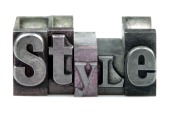 One thing about resumes that seems to get swept under the rug is the idea of creating a plain text version. We all know how daunting it is to write your resume in the first place, and recreating it in plain text can be just as intimidating.
One thing about resumes that seems to get swept under the rug is the idea of creating a plain text version. We all know how daunting it is to write your resume in the first place, and recreating it in plain text can be just as intimidating.
So after all that time and effort you put into making your resume perfect and visually appealing, why would you need to make a second, bare-bones version?
Mostly, plain text resumes are used for job boards. Even though job board sites are getting more advanced and allowing you to upload resume as a Word doc, you risk it being garbled by the "resume formatting bot" (as I like to call it), which leaves your resume looking completely different when it finally makes its way to the employer's screen.
What do I mean? Let's say your perfectly designed resume is constructed with the sections in this order:
- Contact Info
- Professional Summary
- Experience
- Education
- Technical Skills
But when it gets dissected and thrown back together by the job board "bot," the employer could end up seeing this:
- Education
- Experience
- Technical Skills
- Professional Summary
- Contact Info
Needless to say, it's frustrating to fine-tune the look and feel of your resume, only to have it botched by the bot.
To avoid this, take the time to create a plain text version that you can upload to the job board. It might not be as attractive, but the job board won't mess it up. Plus, despite the dullness of plain text, there are ways you can organize the elements of the resume in an easier-on-the-eyes format. (Pongo's Resume Builder does this for you automatically with multiple file formatting options.)
And if you're emailing your resume and cover letter directly to employers, don't forget to send PDF or Word .doc formats unless they state otherwise in their job postings!
RELATED LINKS
Create an Attractive Resume Employers Will Notice
How to Copy and Paste to an Online Job Board
Basic Resume Formatting Rules
Ready To Jump Start Your Job Search?
